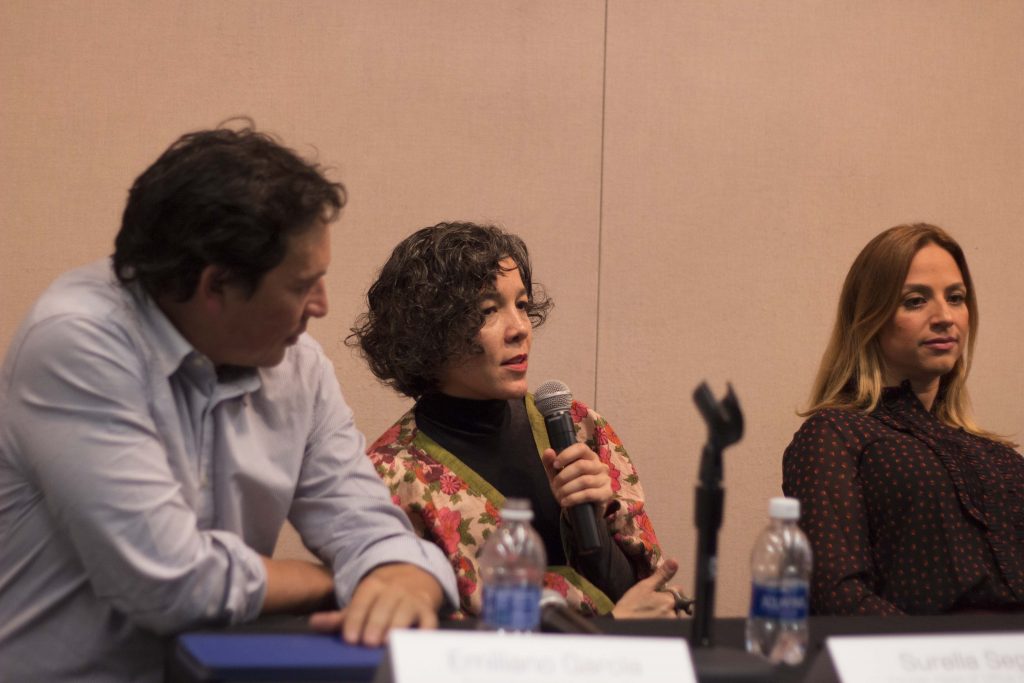
Event—Staying a Step Ahead: Institutional Flexibility in the Rehabilitation of Social Housing in Oaxaca
Paulina Campos (CEO, Fundación Hogares), Surella Segú (Former Head of Office for Urban Development at the Mexican National Workers’ Housing Fund Institute—Infonavit), and Emiliano García (Principal Designer, Taller de Operaciones Ambientales) joined Diane Davis (Charles Dyer Norton Professor of Regional Planning and Urbanism & Chair of the Department of Urban Planning and Design), and David Parente (Concurrent Master in Urban Planning + Landscape Architecture Candidate) in a discussion of planning and design strategies deployed to address the growing problems of housing abandonment in Mexico.
The panel took place on November 9th at the Harvard Graduate School of Design as a joint effort between Mexican Cities Initiative, the Department of Urban Planning and Design, and the Joint Center for Housing Studies.
Focused on Unidad Habitacional Primero de Mayo—a social housing development in Oaxaca, Mexico—the panel addressed the conditions that made it possible for national government officials, urban designers, community development professionals, and housing policy advocates to push forward an experiment in policy innovation via on-the-ground implementation.
The presentation consisted on a threefold approach to the retrofitting interventions deployed since 2012 by Infonavit and Fundación Hogares in social housing projects nationwide Mexico. The initiative works in favor of bringing new conditions for the dwellers’ quality of life via the implementation of physical interventions in housing developments’ open spaces located in the inner cities’ perimeters. In collaboration with Mexican architects, planners, and designers committed to the value of public space design for community development, this strategy found a successful application in Unidad Habitacional Primero de Mayo in Oaxaca.
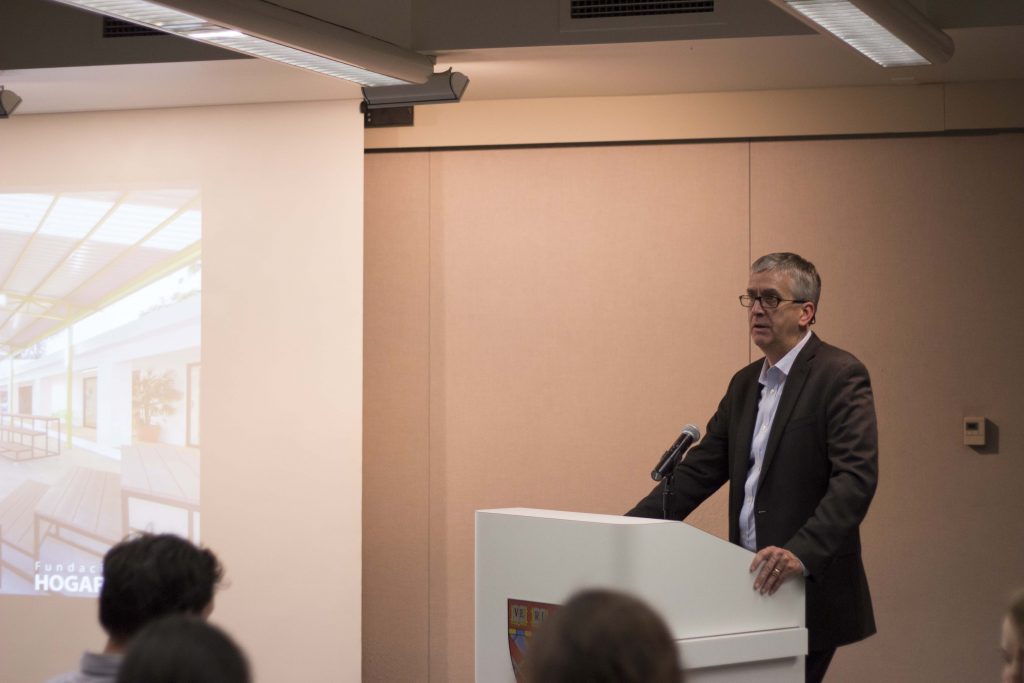
First, Paulina Campos elaborated on the current housing and urban development issues in Mexico. The production of dwelling has constantly increased as the culture of homeownership keeps the market up for supply. On the other hand, rates on housing abandonment have not stagnated yet. This dilemma resonates on the accelerated rates of urban sprawl, abandonment, and insecurity in several regions of the country. Created in 2010, the non-profit organization Fundación Hogares, has the mission of promoting social participation and engagement to build self-reliant communities capable of resolving their own needs and improving their living spaces. Fundación relies on a proprietary community-building methodology, community infrastructure, and research and evaluation to transform affordable housing developments into vibrant communities.
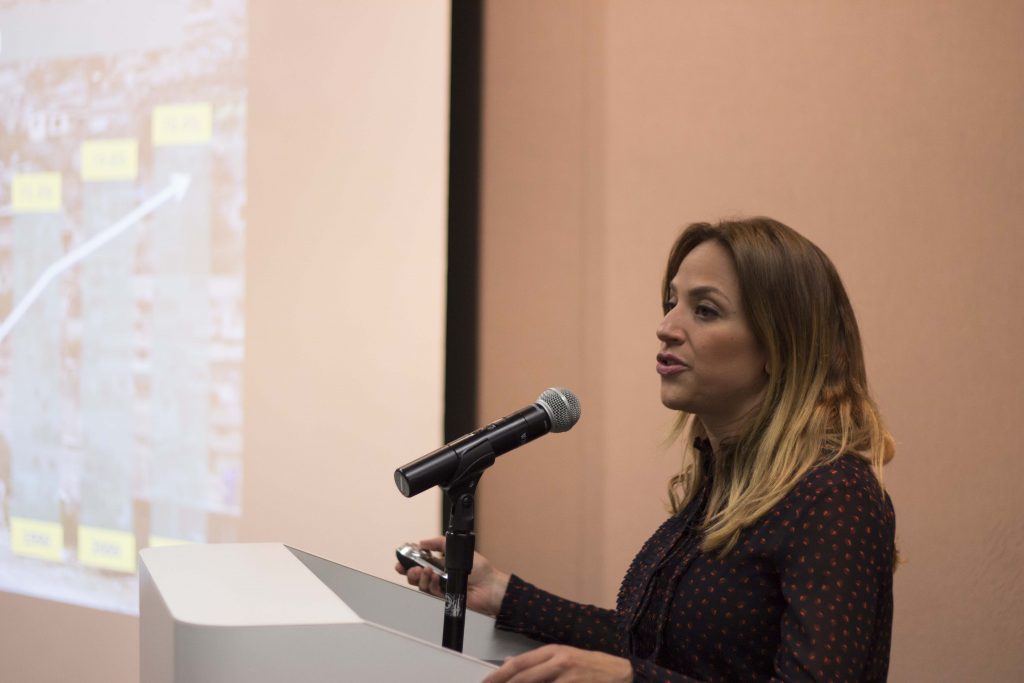
As explained by Campos, the key elements for the successful implementation in Oaxaca included the clear definition of roles and responsabilities among stakeholders and community, consensus-based decision-making, Institutional flexibility, and the cost-efectiveness of the intervention.
Secondly, Surely Segú explained the approach undertook by the Office for Urban Development at the Mexican National Workers’ Housing Fund Institute—Infonavit. As one of the largest mortgage lenders for social housing in Latin America, Infonavit has developed several social assistance programs to ensure community building in most of their inner city located developments. The physical rehabilitation strategy focuses on increasing the asset value of inner city developments by bringing better public space conditions to the deteriorated neighborhoods. Examples in diverse states such as Nayarit, Yucatan, and Oaxaca illustrated the methodological approach and consequent implementation for a successful outcome.
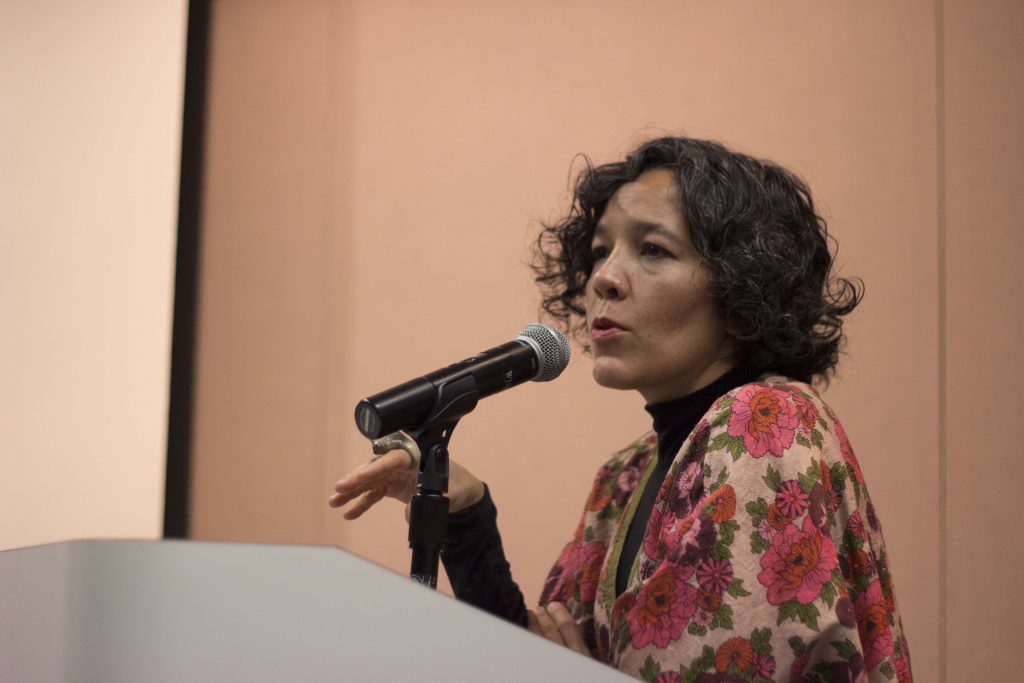
Segú pointed out the community involvement in the processes to ensure a deeper commitment as one of the main takeaways for Infonavit after engaging in these endeavors. Also, the active participation of architects and urban designers in site-specific projects led to better outcomes regarding the use of local materials, construction techniques, and tectonic qualities; that in consequence impact the overall construction quality, hence budgetary efficiency. The institutional leadership in undertaking this new approach to the housing dilemma in Mexico was crucial as the catalyzer of a new status quo on which the production of housing is looking for new development schemes nationwide.
Finally, Emiliano García from Taller de Operaciones Ambientales, the architecture firm commissioned to design the overall urban and open space design, emphasized on the local conditions of the site and how his firm approaches community engagement for better outcomes during the design and execution processes.
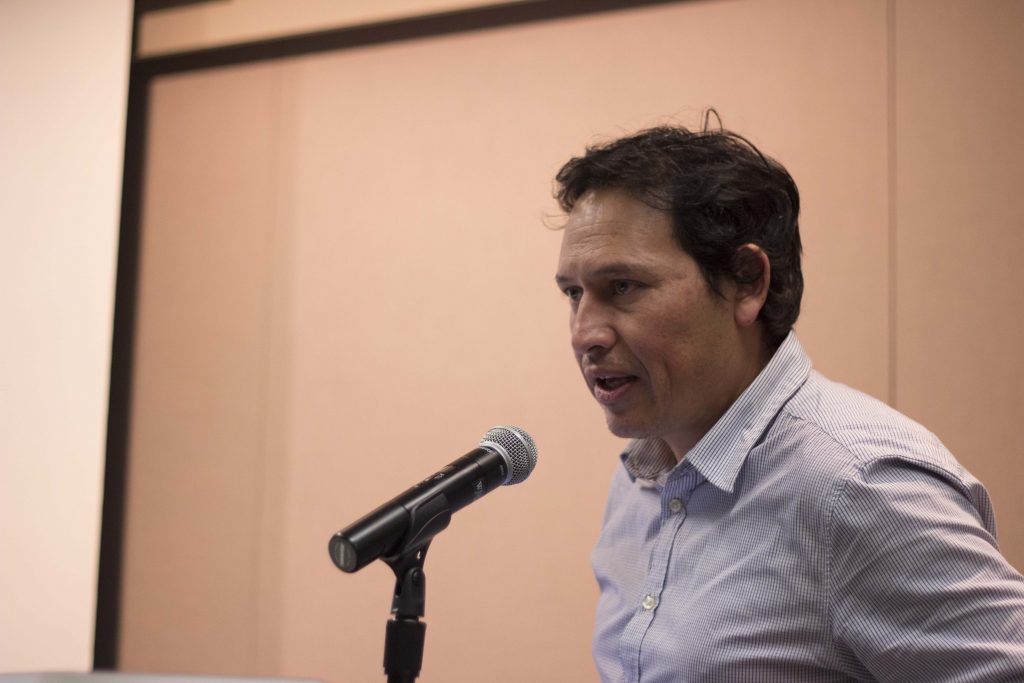
García reflected on the lessons Oaxaca taught him during the development of the project. The cultural aspects embedded in the community as the geographical peculiarities of the site on where Primero de Mayo settles drove the firm’s approach to preserve the heritage of the community through a deep understanding of history, traditions, and the environment. This holistic approach, resulted in a project that ensured community engagement and participation for improvement in their neighborhood.
The successful implementation and results of Unidad Habitacional Primero de Mayo, among many others increased eightfold the funding for urban rehabilitation of affordable housing in 2016.
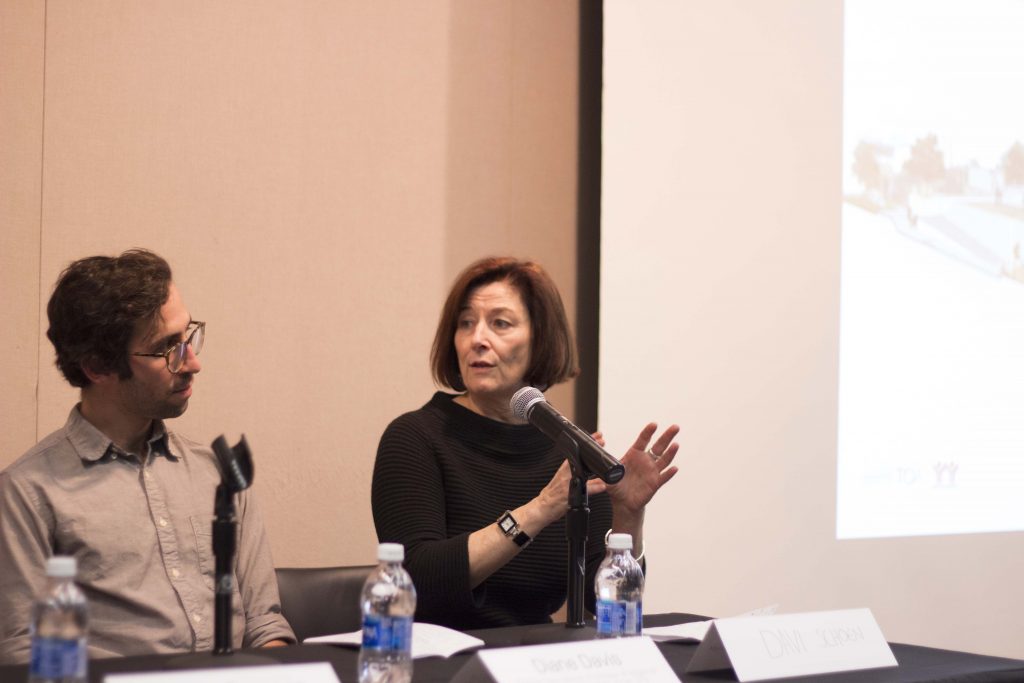
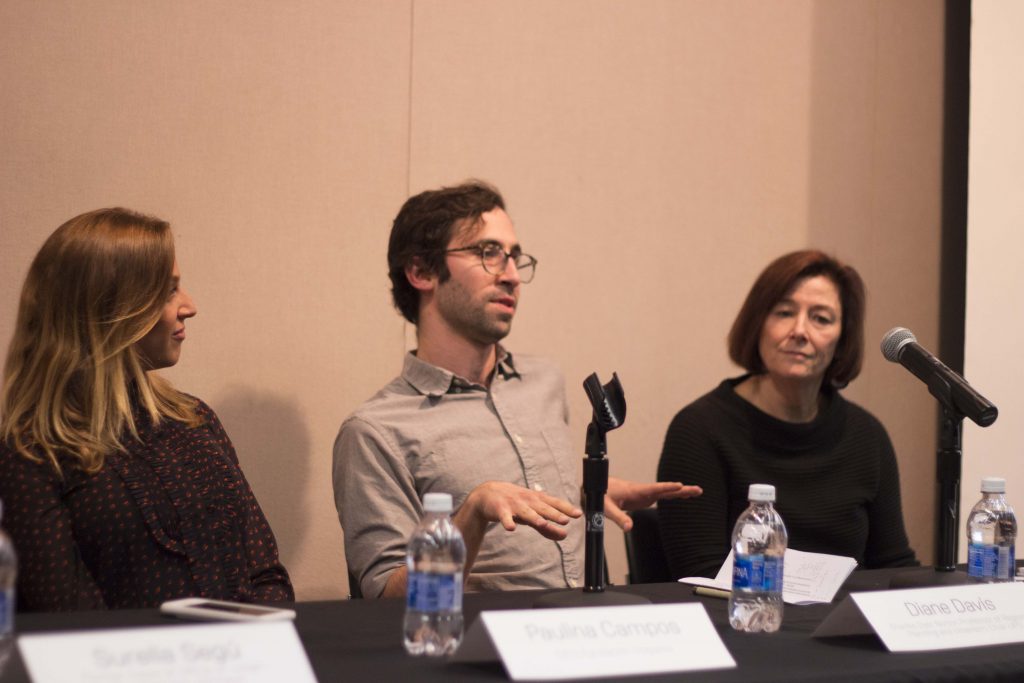
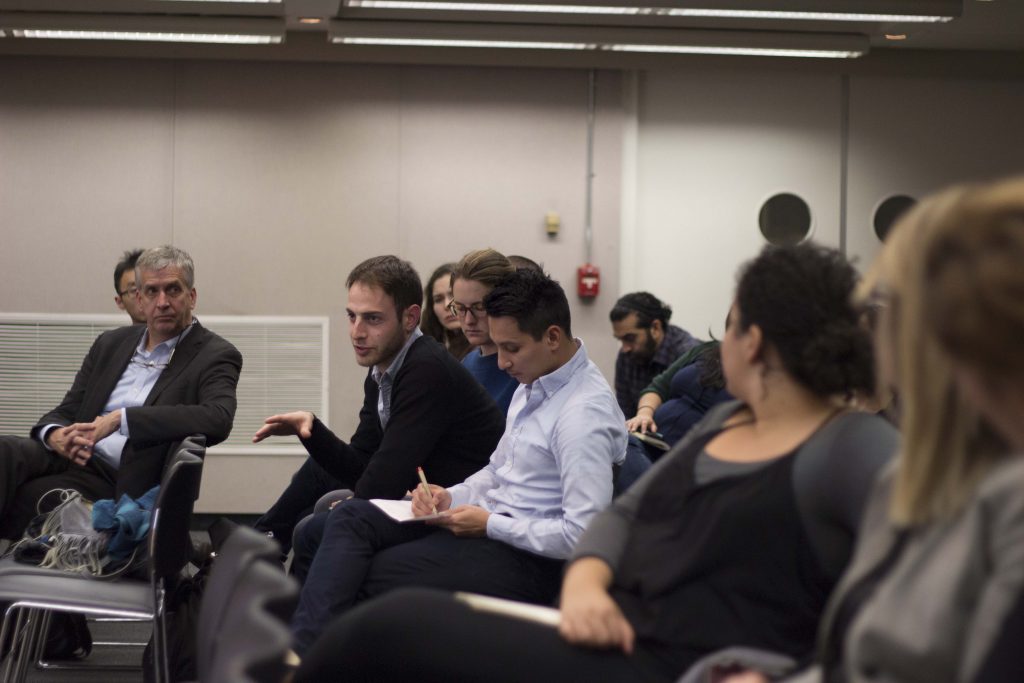
Paulina Campos
Born in Mexico City, Paulina holds a Master’s Degree in Public Policy from the Harvard John F. Kennedy School of Government and a Bachelor’s Degree in Economics from Mexico Autonomous Institute of Technology (Instituto Tecnológico Autónomo de México).
She worked for more than four years in Standard & Poor’s Public Finance Division in Mexico and New York City before joining the Deputy Division for Sustainability at the Mexican National Workers’ Housing Fund Institute (Infonavit).
Paulina is the current CEO of Fundación Hogares, a private assistance institution created with Infonavit’s seed capital. Fundación Hogares’ main goal resides in promoting participation and social responsibility in order to ensure communities’ ability to solve their needs and improve their surroundings. Under her lead, Fundación Hogares has successfully implemented innovative community development programs. The institution has become one of the ten main social organizations in Mexico due to the number of beneficiaries.
Currently, Paulina Campos belongs to the Ashoka Fellowship, the largest social entrepreneurship network in the world.
Surella Segú
Surella holds a Master’s Degree in Architecture and Urban Design from Columbia University Graduate School of Architecture, Planning and Preservation, and a Bachelor’s Degree in Architecture from the Monterrey Institute of Technology and Higher Education in Mexico (Instituto Tecnológico y de Estudios Superiores de Monterrey). As an active professor, Surella has taught at Ibero-American University and Anahuac University in Mexico City. She is currently teaching the Master’s degree program in housing at Centro University for Design, Film and Television in Mexico City.
In 2001, alongside Armando Hashimoto, she founded El Cielo Arquitectos. Their architecture firm has actively participated in several architecture biennales, including Beijing, Pamplona, and Venice, among other Mexican architecture expositions in Italy and Australia. In 2013, El Cielo Arquitectos received the Cemex Innovation Award.
From March 2013 to September 2016, Surella was the Head of Office for Urban Development at the Mexican National Workers’ Housing Fund Institute (Infonavit). She managed the development of urban strategies and rehabilitation programs for deteriorated and abandoned social housing units nationwide. Her work focused on the rehabilitation of public spaces, including more than forty interventions in every Mexican state. Surella carefully selected a team of architects to collaborate in the implementation of the development projects under the strict and constant supervision of the Office of Urban Development.
Emiliano García
Emiliano holds a degree in Industrial Design from Ibero-American University (Universidad Iberoamericana) in Mexico City. In 2001, he participated in Shin Egashira’s Design Workshops in Koshirakura, Japan and the Architectural Association in London. Emiliano also earned a degree in Permaculture Design with Douglas Bullock in Costa Rica. In 2004, he founded Puerto 82 alongside Emiliano Godoy to explore new construction materials.
In 2007, Emiliano founded Environmental Operations Workshop (Taller de Operaciones Ambientales—TOA). TOA focuses in urban, architectural, and landscape design projects with high socio-environmental performance. He is also a founding member of 360+1, a startup for conservation, education, housing, and production projects that link communities and the environment.




